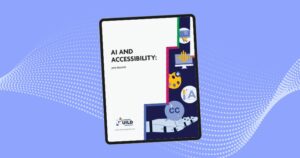Your cart is currently empty!

A New Training Model for Today’s Hybrid Teams

The question of whether organizations should shift to an at least part-time remote work strategy was solved last year when the pandemic hit. Employers discovered that employees, if equipped with the collaboration and communication tools they needed, were just as productive from home as they were in the office.
But not all workers want to remain at home as COVID-19 restrictions begin to ease. For instance, Gartner found that 94% of organizations are allowing employees more flexibility as to where and when they work. A report by Microsoft and the Boston Consulting Group (BCG), Remote Working and the Platform of the Future, found that 35% of employees prefer fully in-office work, 18% fully remote, and the remainder preferring a mix of both.
As employees experience a variety of work options, the result will be hybrid teams. The Gartner report also found that onboarding and innovation are two of the biggest challenges to come with this emergence. Providing employees with the knowledge to use collaborative technology tools is key to maintaining productivity. Organizations need to devise a training strategy that can be rolled out to employees both in-office and remotely.
Training hybrid teams
For some companies, the abrupt shift to remote work required a technology upgrade that included multiple training sessions. The BCG report found that more than 75% of employees feel they’re prepared to use remote working tools. However, managers estimated that only 41% of their team is trained to use them. Added to this disconnect is the report’s finding that though organizations agree that training programs are necessary, two-thirds of companies spend less than $1,200 per full-time employee on tools and training.
To ensure the success of hybrid teams, employees will need to be trained to maximize their remote or hybrid work tools. To enable this model, digital learning platforms make training accessible for all employees—whether they’re in the office or at home. Organizations can deploy digital learning as a way to ensure their hybrid teams are receiving that training. Digital learning platforms centralize training content so that it is easy to access, track, and share. It also becomes a technology investment that will serve the organization long-term due to its greater flexibility and resilience.
Onboarding remotely
It’s harder to transmit and sustain a workplace’s culture when workers are physically distant. BCG found that 51% of employees felt remote work makes it more difficult to feel like part of a team, and that goes for onboarding new employees in particular. Part of the onboarding process involves both formally and informally conveying the organization’s work culture to the new hire–that’s tougher to do within the less personal venue of a video call.
To reduce or eliminate the impact of such issues, organizations can use a learning platform with chat and other collaborative features built in. Though leaders are less likely to do the more informal, in-the-moment training that happens in person, leaders can strategically schedule orientation and coaching sessions, as well as more culture-focused events like office drop-ins and virtual coffee breaks to meet co-workers or ask questions.
A vested interest in learning
Multiple studies confirm that workers want the opportunity to learn and develop. A report by LinkedIn Learning found 94% of respondents would stay longer at a company if it invested in their learning and development. However, in its Leading in Learning report, Deloitte found that only 1% of an employee’s workweek is spent on learning and development.
Learning platforms are useful throughout the employee lifecycle; organizations can use them to retain employees in the long term as well as training them in the short term. A modern learning management system (LMS) allows you to keep your in-office and at-home employees in sync and helping each other as they navigate the hybrid workspace. For employee retention, training must be ongoing. Digital learning platforms are ideal for the long-term learner, allowing them to learn consistently and within the flow of work. For organizations to meet business goals and employees to achieve their potential, ongoing learning is essential.
Effective from a distance
Though the pandemic threw a monkey wrench into daily work life, organizations stepped up to the challenge with communication and collaborative technologies. Now they need to go a step further by providing the training necessary to make hybrid work teams successful. Wherever employees are working from, a digital learning platform will help them get the onboarding and training they need so they can continue to work together effectively.



